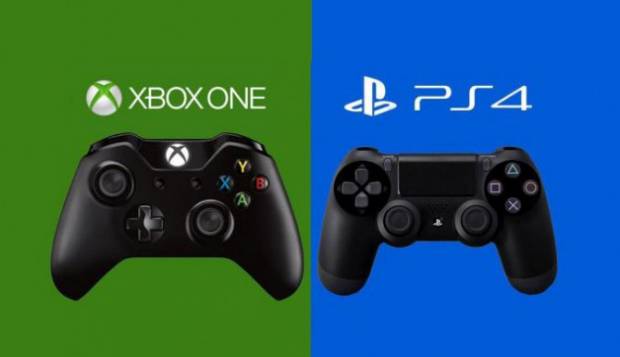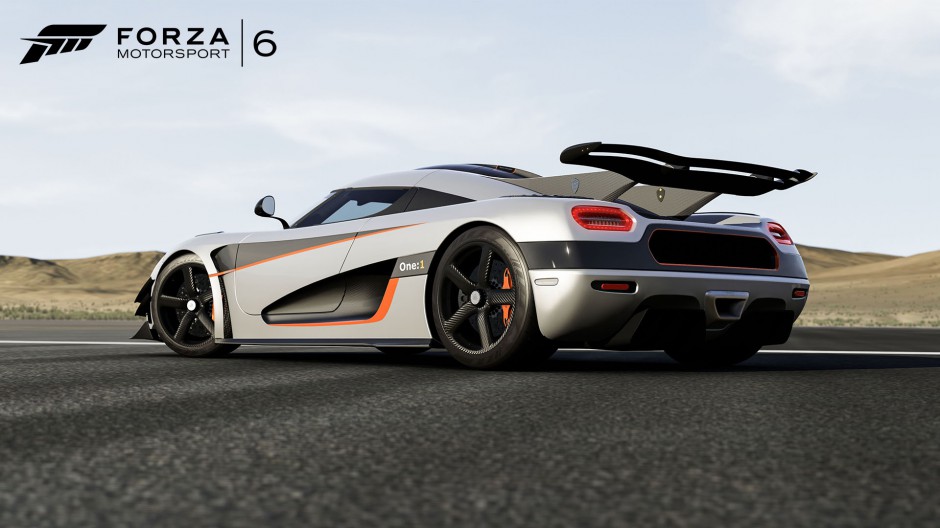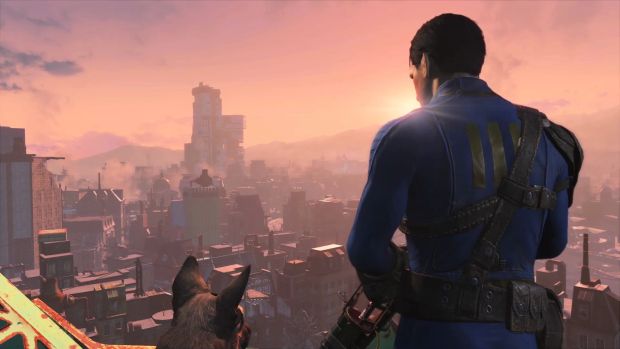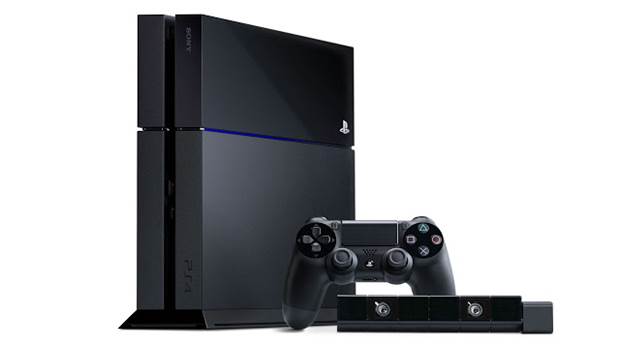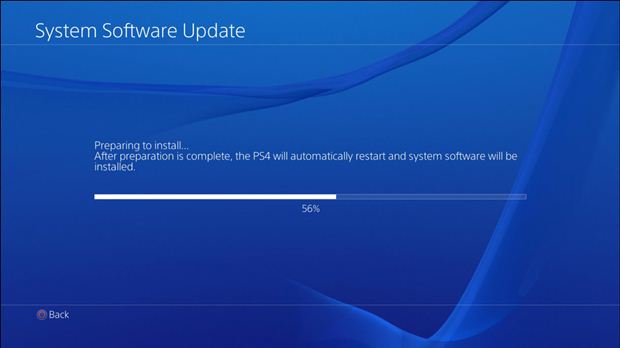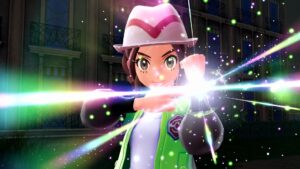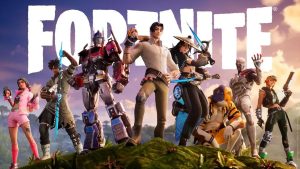
What a year 2015 truly turned out to be. It was a great year for video games, and every single platform got multiple incredible titles to enjoy. After the last few years have been considered disappointing – 2013 was the typical launch year, plagued with low grade launch window games that were rushed to meet deadlines, while 2014 was plagued with an unusually high amount of delays – 2015 was the year when this new generation of video games finally came into its own, and we finally got a taste of the kinds of games that are truly possible on this new batch of consoles.
Every platform did well for itself this year- the PC got some unexpected gems, hits like Undertale, Pillars of Eternity, Her Story, and the long awaited conclusion to Starcraft with Starcraft II: Legacy of the Void. Nintendo had a quieter year than 2014, when they outright dominated, but the Wii U still managed to get some gems in, with Splatoon, Super Mario Maker, Yoshi’s Woolly World, and Xenoblade Chronicles X. The 3DS, now in its fifth year, got a major new hardware launch, and some long waited titles, with The Legend of Zelda: Majora’s Mask 3D and Monster Hunter 4 Ultimate. Even the Vita got to join in on the action with games like Persona 4: Dancing All Night, which so typically epitomize what the Vita is as a platform.
But no, 2015 will be remembered for being the year when the battle between the PS4 and Xbox One finally escalated into a full blown war. Like the classic Nintendo vs Sega, PlayStation vs Nintendo, and PS3 vs Xbox 360 wars of yesteryear, PS4 vs Xbox One became a brutal, bloody battle this year, as Microsoft fought back hard to try and reclaim the spot that they had conceded thanks to their own arrogance and Sony’s savvy, and Sony tried to widen the lead between their PS4 and Xbox One even further. On every field of battle, the PS4 and Xbox One met- from price to third party games, from exclusives to future game announcements, from features and services outside of gaming to backwards compatibility, the PS4 and Xbox One traded blows.
But every war has a winner, and as 2015 draws to a close, it may be time to stop and look back on the year, and try to consider: just who came out on top in the first round of this generation’s console wars? Was it Microsoft, who made huge strides to shake off the stigma of the past few years, and emerge as a gaming centric platform again? Or was it Sony, who continued to widen the lead with their competition with their laser sharp focus on the games that their customers wanted to play?
Only one was victorious. Let’s try and figure out who it was, though.
"Not enough credit can be given to Microsoft for what they pulled this year. This was the year that their comeback was truly cemented, the year that they finally began to reverse the disastrous unveiling of the Xbox One from a few years ago."
Not enough credit can be given to Microsoft for what they pulled this year. This was the year that their comeback was truly cemented, the year that they finally began to reverse the disastrous unveiling of the Xbox One from a few years ago, and regain some goodwill from the customers, the year that they finally had some exclusive games giving their system a discrete identity, rather than just being a poor man’s PS4. Coming off of the high of last holiday season, when the Xbox One finally managed to sell more than the PS4 (though the PS4 was still leading in lifetime sales) thanks to aggressive pricing and bundling, Microsoft decided to make the new, lower price point of $349 permanent earlier this year- a price that at the time, undercut Sony’s still $399 console by a whole $50, or the price of a game, or a year’s subscription to Xbox Live or PSN.
What came after was a series of moves designed to compensate for all the negative momentum the Xbox One had struggled with since its launch- a new user interface, that would do away with the old, slow, bloated, and unnecessarily obtuse media focused UI that the Xbox One had launched with, and replace it with the leaner, faster, and far more powerful Windows 10 inspired menu. A revamping of the Xbox Live Games with Gold program to have it actually be worth the cost of admission, by increasing the quality and quantity of games on offer. And free, albeit limited, backwards compatibility with the Xbox 360.
This last point was really a feather in Microsoft’s cap- backwards compatibility isn’t actually a much used feature, but it is sort of a symbol for how a company perceives its customers. Microsoft, by offering backwards compatibility with Xbox 360 games, digital and physical, and doing it all for free, even though the games were enhanced with Xbox One features, won some long needed goodwill from gamers everywhere- this was a move with no obvious profit motive, a move that would probably lose Microsoft money rather than make them any, but they were still offering it to their customers, out of a wish to do right by them, and to honor any previous history they may have had with the Xbox brand. It was a good move, and the first real ammunition that Microsoft and its fans have had in the console war for years.
"There wasn’t anything bad with the Xbox One’s exclusive lineup. It just felt… stale."
On the games front, things were actually not quite as rosy, in spite of Microsoft proudly trumpeting this year as ‘the best lineup in Xbox history.’ The trouble is, that was out and out a lie- the first six months saw absolutely no retail exclusive for the Xbox One released, though we did at least get Ori and the Blind Forest (an excellent indie game, albeit one shared with the PC), and a Fast and Furious themed expansion pack for Forza Horizon 2 (albeit one shared with the Xbox 360). The back half of the year, though stacked with what you would consider big games, was, from the player’s perspective, filled with games where it was hard to shake off the distinct feeling of it all being more of the same, the same song and dance we’ve seen for over a decade now. We got a new Halo, and it was an improvement over Halo 4 and Halo: The Master Chief Collection, but it was still just another Halo. We got a new Forza, and it was an improvement over Forza Motorsport 5, but it was still just another Forza. We got Rare Replay and Gears of War Ultimate Edition, which quite literally were more of the same- a repackaging of thirty of Rare’s best games in the case of the former (albeit in a very nicely done, budget priced, classy package), and a full remake of the 2006 game that made the Xbox 360 a force to be reckoned with in the case of the latter (though with changes made that made the already poorly aged experience even worse).
There wasn’t anything bad with the Xbox One’s exclusive lineup. It just felt… stale. We’ve already had three retail Forza releases and two retail Halo releases on the Xbox One at this point. We’re getting another new Gears and another new Halo on the Xbox One next year (and we’re probably going to be getting a Forza Horizon 3 as well). It’s really hard to feel excited by all these games when they seem to be just going through the motions. Relying on a few blockbuster franchises isn’t necessarily a bad strategy – Nintendo has made an art form of doing just that for thirty years now – but in that case, Microsoft would be well pressed to learn how to keep their franchises feeling fresh from Nintendo too. Releasing a new game in each every year in a desperate attempt to bolster the lineup or flagging sales is not how you do it.
"In spite of Microsoft’s best efforts to bridge the hardware gap between the PS4 and the Xbox One, with new software development kits, new developer APIs, DirectX 12, and a new UI that has less overhead than the old one, freeing up more resources for developers to use, the disparity between the Xbox One and the PS4 has never been more painfully apparent than it was this year."
Things were even worse on the third party front, where no amount of spin or fanboy wrangling will change the fact that the Xbox One is struggling to keep up with the PS4, across two dimensions- quality and quantity. To tackle the quantity question first, the PS4 is simply managing to get more third party games than the Xbox One- AAA, indie, Japanese, western, more developers are aligning with Sony’s more powerful console, which also comes with the benefit of having a more developer friendly custodian heading it. Just this year alone saw the release of third party games like Hotline Miami 2, Disgaea 5, and Tales of Zestiria- all high rated third party titles simply not available on the Xbox One.
The problem is that the third party games the Xbox One does get all run far worse on it than they do on the PS4, which brings us to the quality issue. In spite of Microsoft’s best efforts to bridge the hardware gap between the PS4 and the Xbox One, with new software development kits, new developer APIs, DirectX 12, and a new UI that has less overhead than the old one, freeing up more resources for developers to use, the disparity between the Xbox One and the PS4 has never been more painfully apparent than it was this year. This is no longer a question of counting pixels- the graphics war between the PS4 and Xbox One is beyond just 1080p vs 900p now. Games on the Xbox One unquestionably look and perform worse than they do on the PS4. Major third party games like Star Wars: Battlefront, The Witcher 3: Wild Hunt, Fallout 4, and Just Cause 3 all were far worse on the Xbox One than they were on the PS4. Fallout 4 and Just Cause 3 were especially bad on the Xbox One, with framerates going down to zero frames a second at times, and loading times extending to fifteen minutes in many cases. This, coupled with the lower resolutions that all Xbox One versions of multiplatform games have, made it very clear that the system is already struggling to keep up with the developers’ vision when it comes to games.
The problem can only get worse as we enter next year- games are going to continue to get more and more ambitious and complex, and the Xbox One’s hardware is set in stone. No amount of cloud processing, new SDKs, or DirectX 12 can negate the PS4’s obvious hardware advantage. The fact of the matter is, when it comes to games, the PS4 has it in the bag.
"In spite of an unusually weak year from Sony on the exclusive games front, the console still managed to get a whole slate of impressive titles."
And that was true of the PS4 this year too- in spite of an unusually weak year from Sony on the exclusive games front (they outright admitted that it had been a poor showing from them), the console still managed to get a whole slate of impressive titles that made it a no brainer when it came to recommending a new console to someone. Although Sony had a poor start this year with The Order 1886, they rallied soon with From Software’s masterpiece, Bloodborne, which to this day remains the best exclusive across the PS4 and Xbox One. Over the summer, they got remasters of God of War 3, as well as the entire Uncharted trilogy, while for new games, we got Everybody’s Gone to the Rapture, and more impressively, Until Dawn, the horror game sensation that came out of nowhere and ended up being a massive cult hit. PS4 also got Rocket League over the summer, which remains probably the most fun game this year, as well as Hotline Miami 2: Wrong Number, the sequel to the high octane breakout indie hit game from a few years ago. It got a great, beautiful port of the PS3 exclusive Journey.
These were all games, incidentally, that the Xbox One did not get. And Bloodborne alone is a better game than any that the Xbox One received this year (and this can be proven by the only empirical metric that can be used to quantify something as inherently subjective as a game’s quality- Metacritic, where Bloodborne has outscored not just all Xbox One exclusives this year (and ever), but also most games this generation period). But that’s not even all- we got experimental new experiences, like Until Dawn, we got to revisit familiar faces, with the remasters for Uncharted and God of War, and we also got some great third party games that simply have no equivalent on the Xbox One, like Rocket League.
This isn’t even counting third party games- games like Destiny: The Taken King, Call of Duty: Black Ops 3, Metal Gear Solid V: The Phantom Pain, Just Cause 3, Fallout 4, The Witcher 3: Wild Hunt, and Assassin’s Creed Syndicate were all third party games that were tangibly better on the PS4, offering graphical and performance based perks and upgrades, as well as exclusive content for the PS4 version.
So Sony dominated entirely when it came to the games front. However, they did stumble when it came to the services front, where Microsoft made great strides. For instance, consider backwards compatibility, where Sony’s plan to sell PS2 Classics on PS4 came off as cynical and money minded, compared to Microsoft and Nintendo’s efforts- Sony was reselling PS2 games on the PS4 store, and even if you owned a PS2 Classic digitally after buying it on the PS3, you would need to pay $15 to buy it on the PS4 again. It was a breach of implicit consumer trust and of digital continuity, and Sony failed to live up to their own standard that they had pioneered with concepts like Cross Buy, Cross Save, and Remote Play, with this move.
"None of Sony’s firmware updates this year were bad, and they were all appreciated- but none of them made the PS4 experience dramatically better. These features all just iterated on what we already had before."
At the very least, Sony’s emulation of PS2 games appears to have been far better than what Microsoft is offering with the Xbox One, which appears to be largely spotty. PS2 games are also enhanced, supporting PS4 specific features like SharePlay, 1080p output, and Trophies, so at the very least Sony is incentivizing playing through these games again. Still, it cannot be denied that Sony should at the very least have offered a discount to previous owners of PS2 Classics if they wanted to buy the same game on the PS4 again- it wouldn’t have cost them much, but it would have won them consumer trust and loyalty, intangibles that are invaluable.
Sony’s biggest firmware updates this year added features like Suspend/Resume (a feature that had been promised back in 2013 before the console even launched, finally made available earlier this year), player communities to discuss games and host tournaments, and other social features. None of these were bad, and they were all appreciated- but none of them made the PS4 experience dramatically better. These features all just iterated on what we already had before.
Of course, one of the reasons that Sony didn’t have to work hard on dramatically overhauling the PS4 UI is because they got it so right the first time- Microsoft was forced to do a full UI relaunch because the original Xbox One UI, in spite of constant updates and fixes, was a buggy mess. The PS4 UI was good to begin with, and Sony seems content to merely not rock the boat there.
That probably summarizes the entire year for Microsoft and Sony this year, actually. While Microsoft definitely did more this year than Sony did, most of their work was trying to catch up to where Sony was at the beginning of this year- which they largely did successfully. Everything that Microsoft, led by Phil Spencer, did, from catchups to new UI to even exclusive games, was in an effort to bridge the gap that existed between the Xbox One and PS4. Sony may have done less this year, but they started from such a higher point that they still ended this year in a better position than Microsoft did. Even minor improvements to the already great PS4 experience led to the PS4 ending in a far better place than dramatic improvements to a middling Xbox One experience. Add to this the PS4’s undeniable superiority in the one thing that matters above all else, games, and it is undeniable- the winner of the war, at least in 2015, was the PS4. There is no getting around it.
The good news is, however, that Microsoft did well, and if this is how they plan on continuing pursuing Sony, then there is a very real chance that they overtake Sony and the PS4 eventually, in terms of games and features if not sales. Of course, Sony won’t make it easy for them, either, and they do have the benefit of having the better hardware with more game support.
Next year looks great- with great exclusives lined up on both sides (Quantum Break, ReCore, Crackdown 3, Scalebound, Halo Wars 2, Sea of Thieves, versus Uncharted 4, Gravity Rush 2, Gran Turismo Sport, Horizon: Zero Dawn, Detroit: Become Human, Dreams, Persona 5, Street Fighter 5, and Dragon Quest 11), and Sony and Microsoft circling each other for blood, the customer can only benefit from all this. Keep the competition and the war going, guys- we, the players, are the ones who benefit from all this.
Note: The views expressed in this article are those of the author and do not necessarily represent the views of, and should not be attributed to, GamingBolt as an organization.








